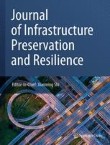Advancing infrastructure resilience: machine learning-based prediction of bridges’ rating factors under autonomous truck platoons
The operational characteristics of freight shipment will significantly change after the implementation of Autonomous and Connected Trucks (ACT). This change will have a significant impact on freight mobility, ...


